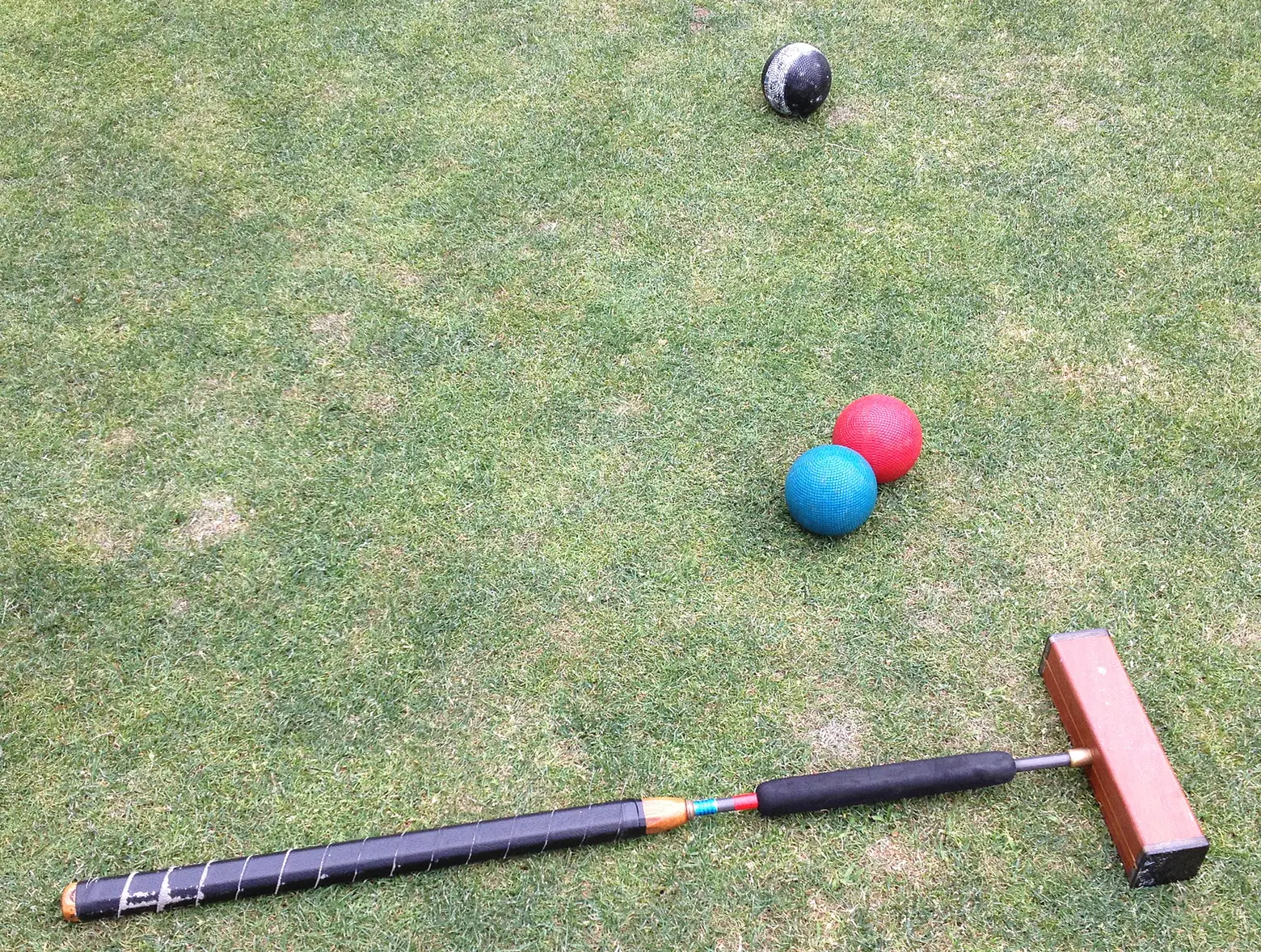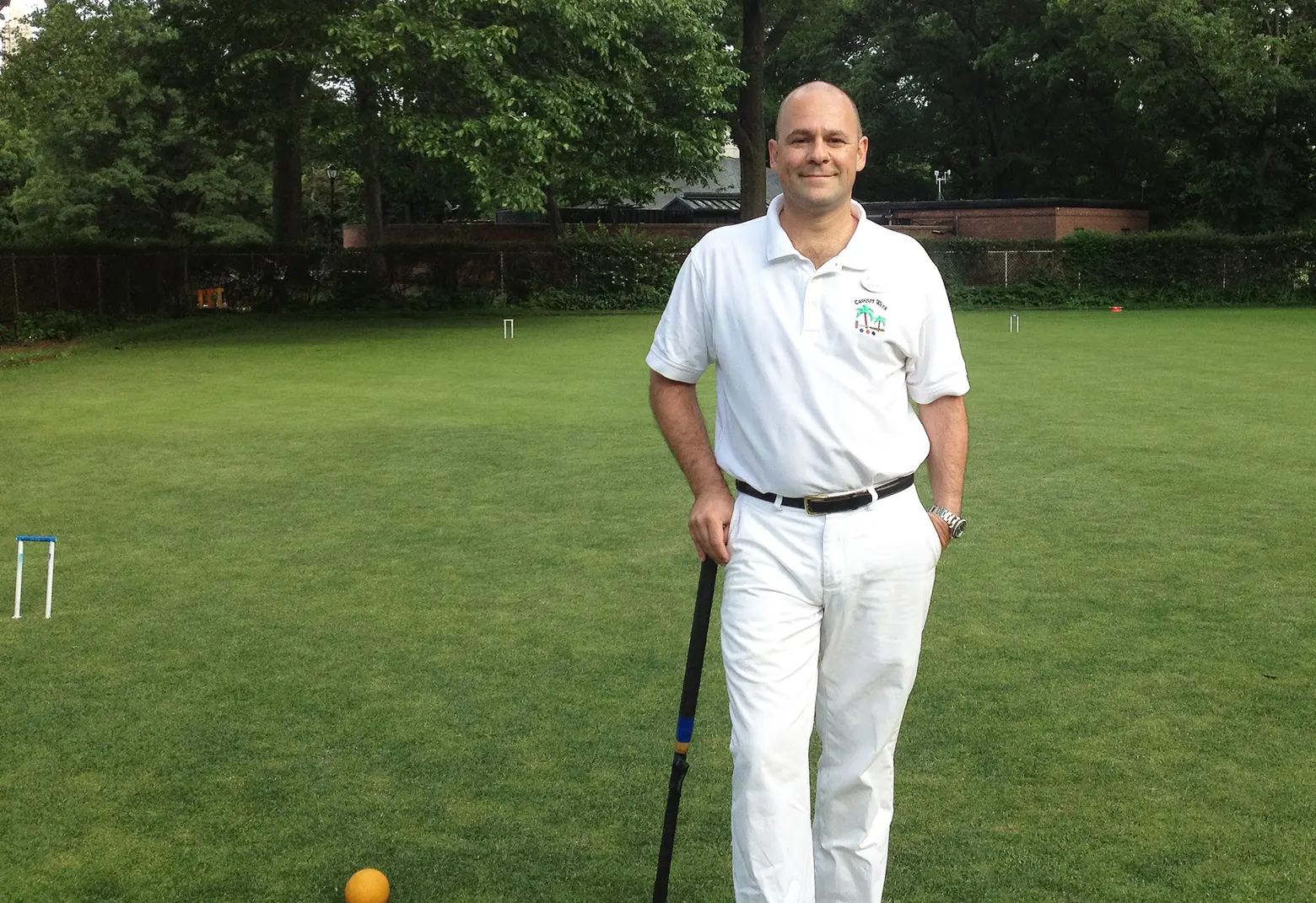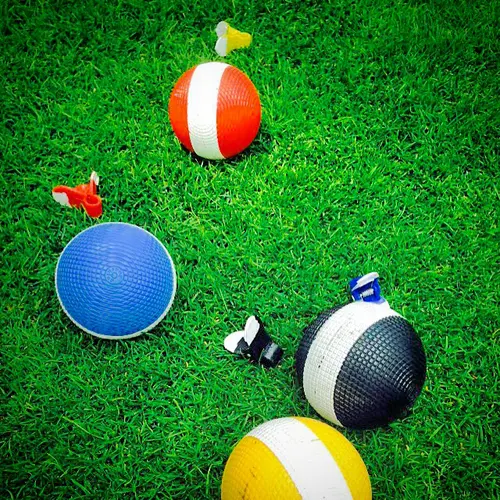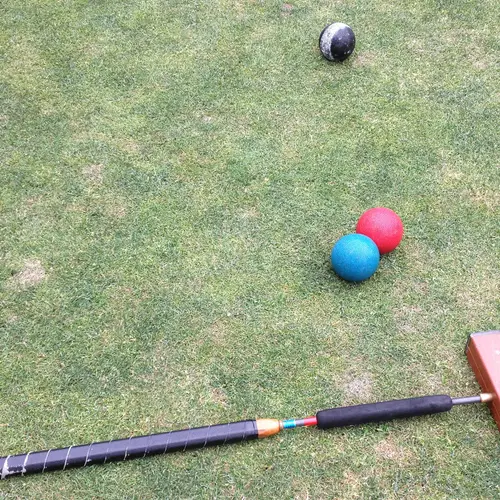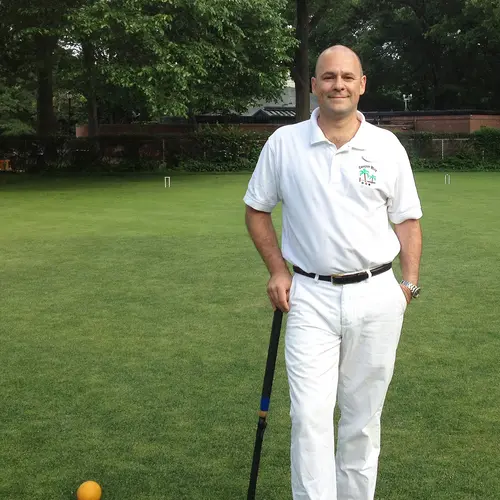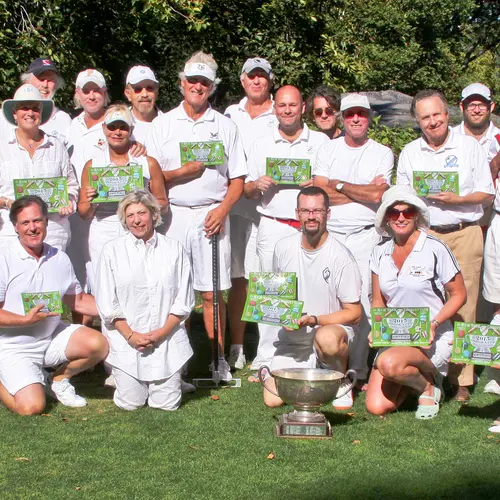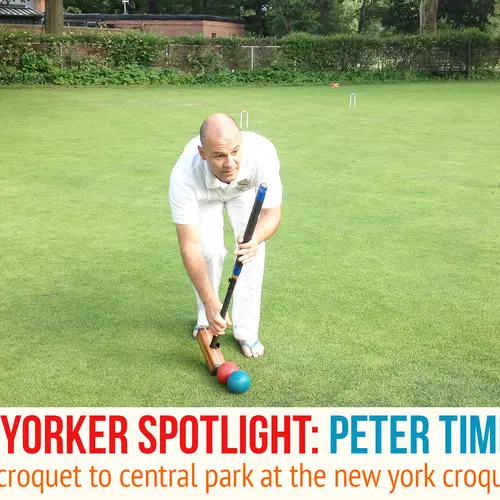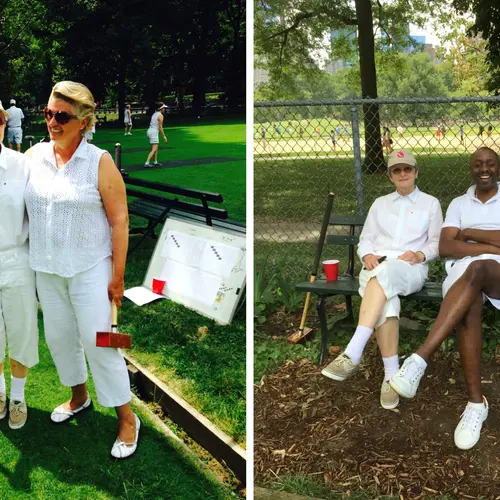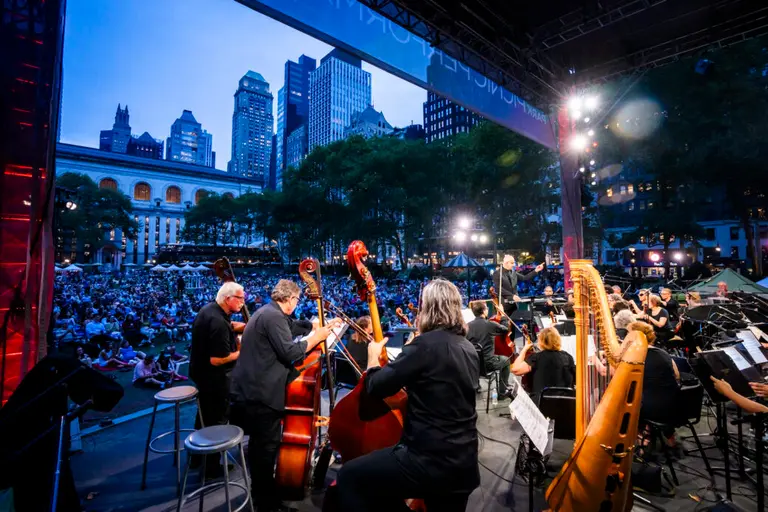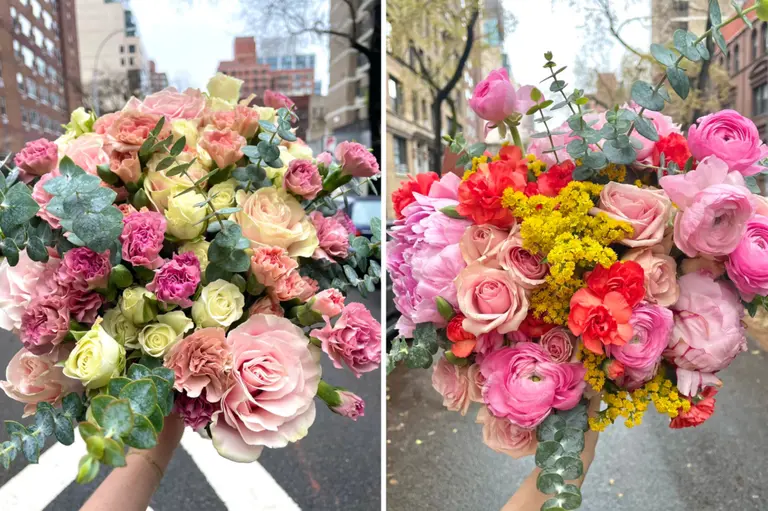Spotlight: New York Croquet Club’s Peter Timmins Brings the Game to Central Park
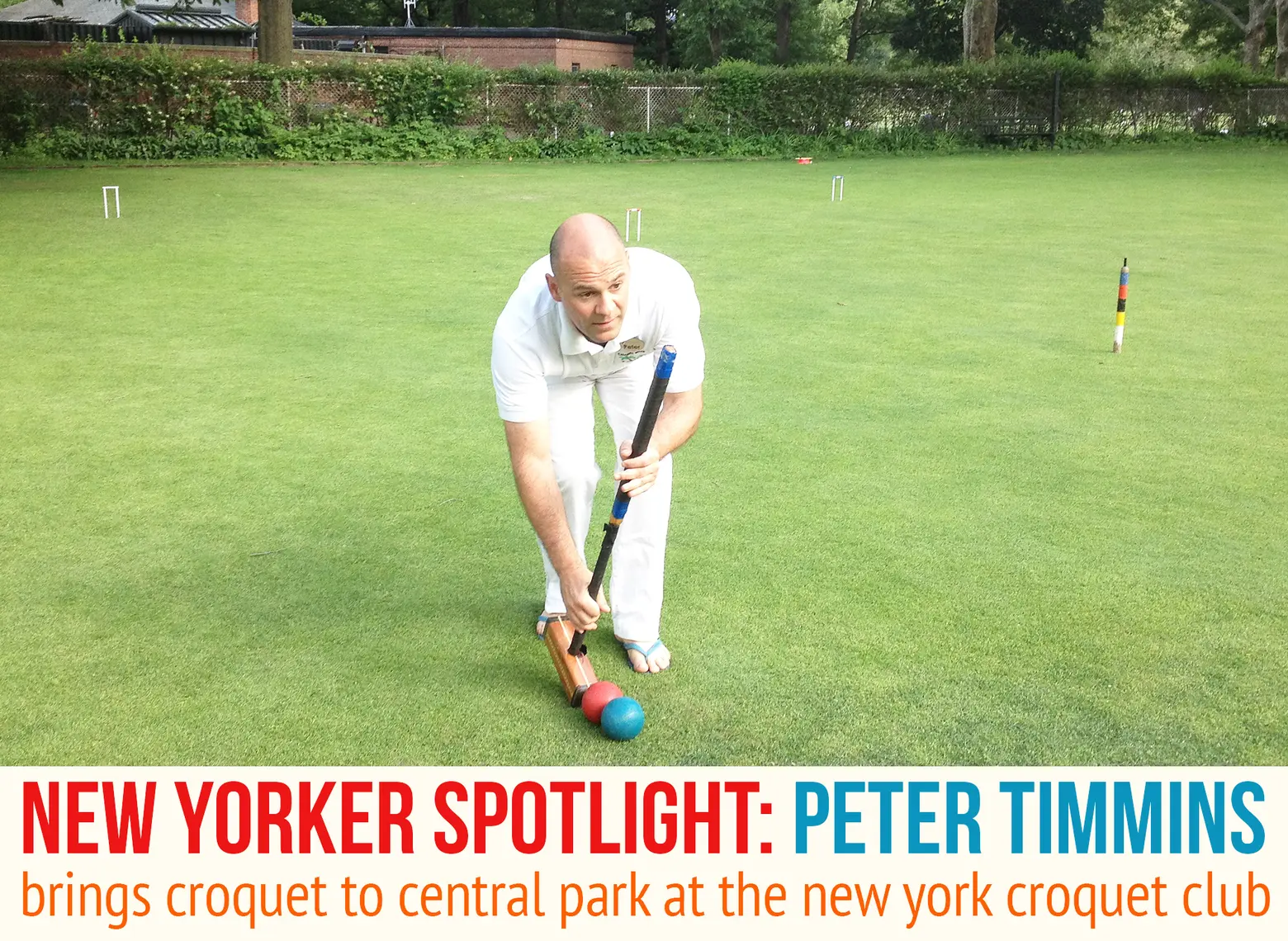
If you head west on the road that winds by the Sheep Meadow in Central Park, there’s a good chance you’ll see New Yorkers dressed in white, playing croquet on a stretch of green lawn. Yes, the sport associated with tea parties and country clubs has a home in New York thanks to the New York Croquet Club. But the club’s dedicated members are not playing the typical backyard version. Instead, they’re playing American Six-Wicket Croquet, an iteration of the sport played in the United States that exists on the croquet spectrum alongside the internationally played Association Rules as well as the widely popular Golf Croquet. American Six-Wicket is an intense game that’s full of strategy, as players try to maneuver balls with their mallets in ways that are hard for those unfamiliar with the sport to imagine.
At the New York Croquet Club’s helm is Peter Timmins, an ambassador for the sport in New York City. Peter tells everyone he meets to give croquet a try at one of the club’s free Monday evening clinics, which is exactly how he was first introduced to it. 6sqft recently spoke with Peter to learn about the complexities and excitement of croquet and why there is nothing better than playing the sport in Central Park.
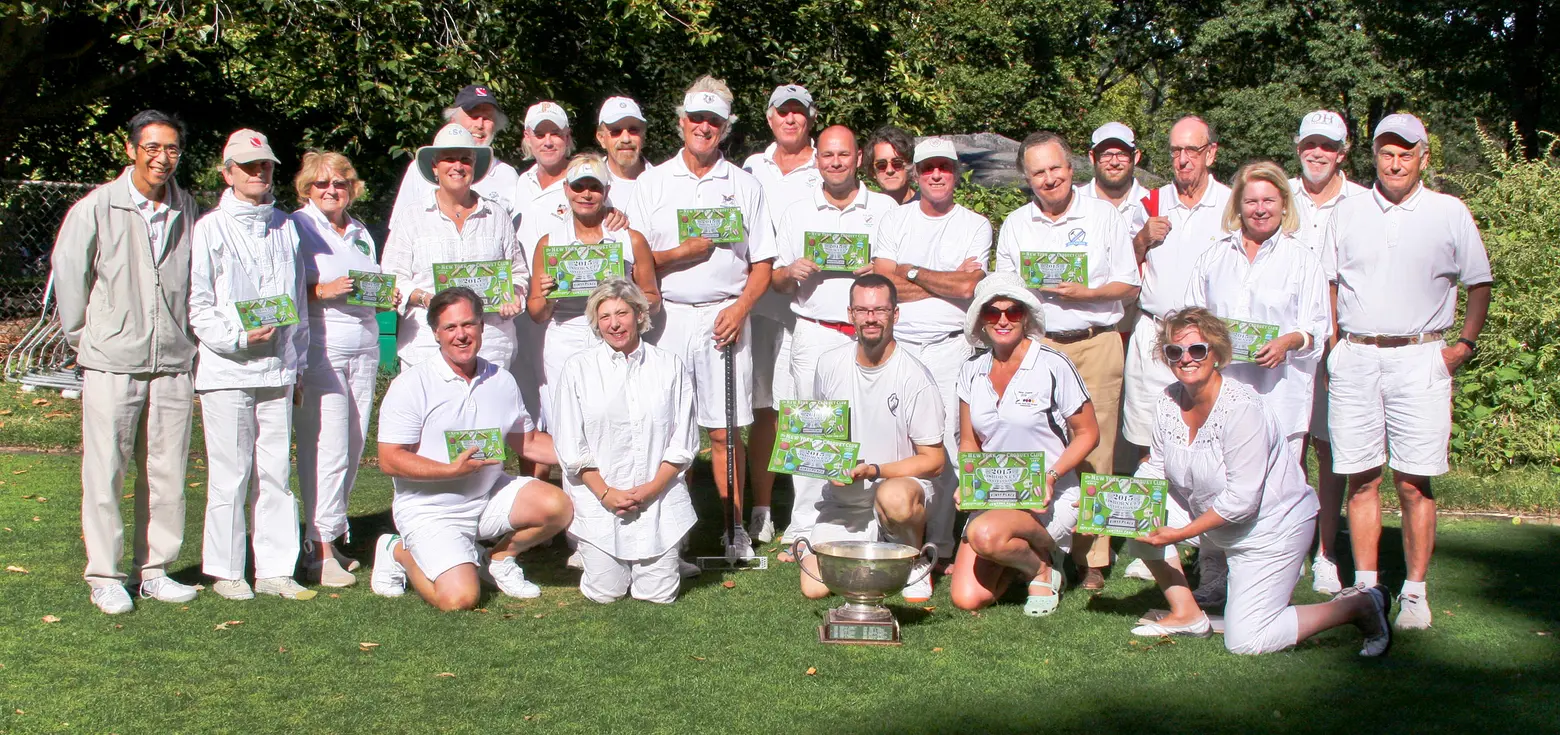
The 2015 Osborn Cup via the New York Croquet Club/Flickr
What’s one thing most people do not know about croquet?
The intricacy of the game and the degree of strategy that is part of it. No two games will ever be played the same. There’s an infinite amount of outcomes that can take place. Somebody explained to me once that it’s an onion. At every level of the game, somebody who’s playing will learn something that they didn’t know to begin with.
When and how were you introduced to the sport?
About 10 years ago I was hanging out in the meadow, where I grew up in New York City. All kids sort of gravitate towards the Sheep Meadow. At some point I looked over north, coming out of the meadow and heading home, and saw a bunch of people there. Somebody invited me to a Monday evening clinic, and I’ve been smitten ever since. When I first started playing the game, I thought what kind of a person would take off four days to play croquet [at a tournament]? I’m that guy.
The New York Croquet Club has a rich history. When was it founded?
Next year, the New York Croquet Club will celebrate its 50th anniversary. To say that croquet started in Central Park 50 years ago is not true. When Central Park was designed and built, they had croquet deeded into the blueprints. The actual sanctioning body to make it fair amongst all players – the handicapping system, the rulebook – that was developed 50 years ago with a gentleman by the name of Jack Osborn. We play the Osborn Cup in September. A couple of Jack’s buddies who are still around like Teddy Prentis are the reason why we have a sanctioning body in Florida, the United States Croquet Association.
How is six-wicket croquet played?
The game can be played as singles or doubles. There are four balls: black and blue will always be teammates and red and yellow will always be teammates. If you’re playing doubles, I’m black and my partner is blue and we are against red and yellow. If I’m playing singles against an opponent, I’m black and blue, they’re red and yellow.
The objective is to score as many points in an hour and fifteen minutes as possible. In order to do that, every ball that goes through a wicket scores one point. In American Six-Wicket rules, there are a total of six wickets and the center post. So you go through all six wickets in both directions – once forwards and once backwards – for a total of 12 points per ball. Then you hit the post with your balls to end the game. If you hit the post with both of your balls first, you have won the game first.
The maximum score you can achieve is 26. You have to be a pretty good darn player to get to the 26 mark. Not everybody can in the hour and fifteen minutes that is allotted. I play matches where I might essentially be the winner at 15-14, or I can win a match in a 10-5 type situation. My handicap is not at the championship level where I can expect to run the course as they call it in the time.
Are there differences between six-wicket and the backyard game?
The barrier to entry in really any aspect of life is vocabulary, at some point. If I told you that I needed to rush yellow over to three back, pick up red and then score the hoop, it means something to me. It’s hard to believe it. At the sanctioned level, we’re talking about a much higher degree of professionalism in the equipment. Our level at the sanctioned game has reinforced steel hoops (wickets). My mallet is probably about $450 and the balls themselves are about $100 each. In the backyard nine-wicket game that everybody has a familiarity with, you step on your ball and send your opponent into the woods. You’re not allowed to do that in our game. If you hit your foot with a mallet you would break your ankle.
How complex does the sport get?
You walk onto the court and with 10 minutes to go, you’re down by two points, you see all these options available to you. If I had any hair left I’d pull it out because you’re befuddled with too many choices. What’s the right strategy? There’s two ways that I’ve quantified the game: it’s skill, which is essentially strategy, and execution. If you can see the strategy, can you execute? At a beginner’s level, you have the hurdle of both trying to figure out what is a strategy and how to execute it. At the championship level, you have much more of the strategy versus the execution because you know you can make those shots. Now you have to be smarter than your opponent.
What I really appreciate most about the game is that there’s no telegraphing of your opponent’s ability. If you walk onto the court against a six-foot-tall, 250-pound man, you’re on equal footing as that person on a physical basis because you both can walk and swing your arms. Like chess, when you sit across the board from somebody, the strength of that opponent is really his ability to execute his strategy, which is in the mind. I have gone onto a court and underestimated the 78-year-old lady and never saw her coming.
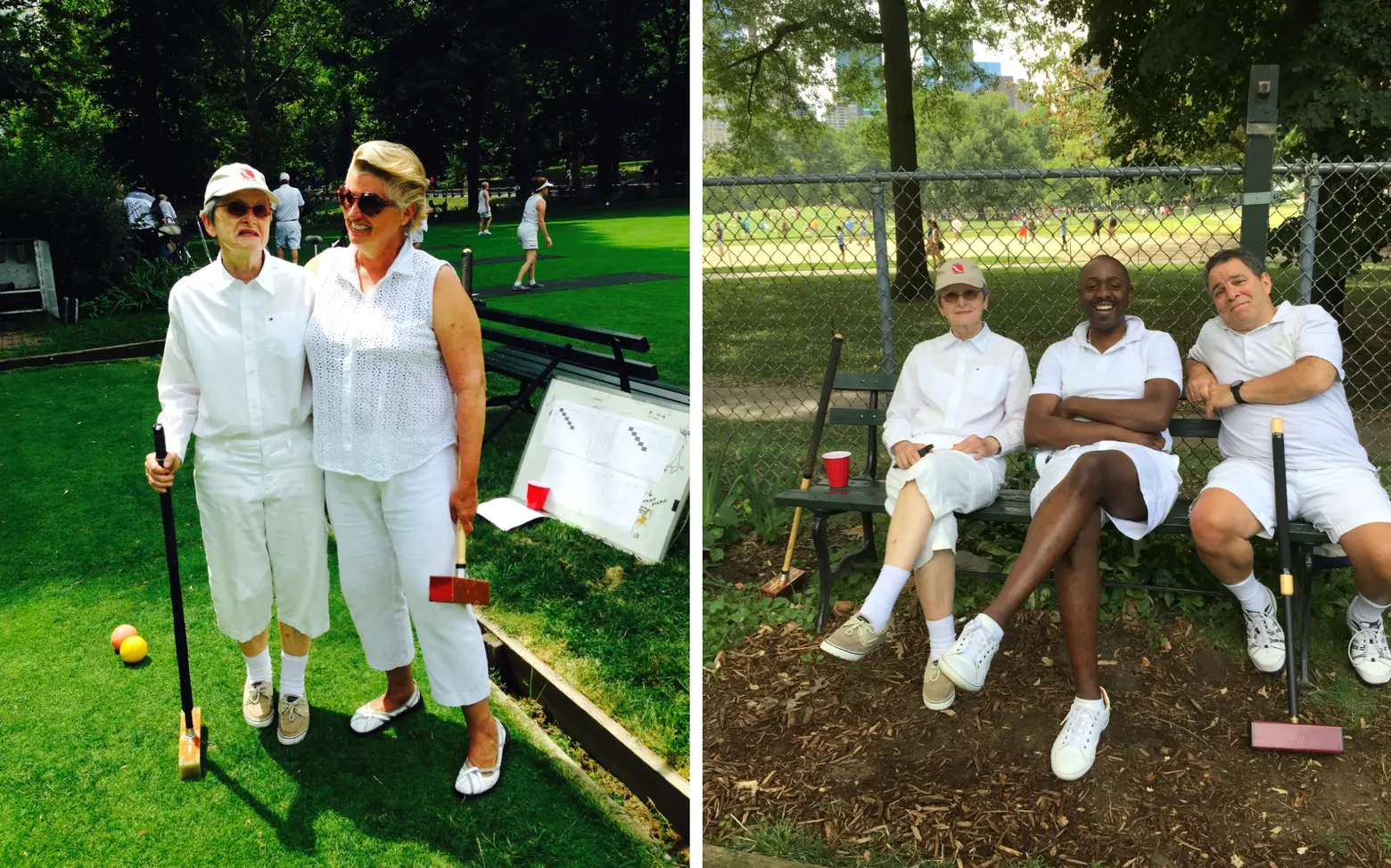
Via the New York Croquet Club/Flickr
What is the club’s demographic?
We are not a member of another golf or tennis resort with croquet on the side. We are strictly a croquet organization and have a very good disparity of people from different economic backgrounds. We have young professionals, middle to older individuals, people who have flexibility in their schedule, but we also have a good smattering of retired individuals. Because we are a zero-athletic-ability sport, the elderly are able to come out and play the game. There are several individuals who will visit our courts five times a week because it’s their outdoor activity. Not a lot of aspects of Central Park promote elderly people’s ability to participate in a competitive sport like that.
What makes Central Park great for croquet?
We’re not renting any facilities from the City. They provide it to us complimentary. We have a permit for the Lawn Sports Center. Our facility is shared with the lawn bowlers. We feel blessed. The trees surrounding our facility are majestical; just a gorgeous place to hang out. To be able to play croquet, a very tranquil yet cut throat game at times, in the center of New York City, it’s a gift.
Since the club plays in the park, do people stop to watch and ask questions?
All the time. We look over the fence at folks and say hello and they will ask, “What is this?” And we say croquet and they go, “Oh, it doesn’t look like what I did in the backyard when I was young.” There are a lot of folks who will take photographs of what’s going on becausepeople dressed in white chasing around a bunch of balls is not something you see all the time.
What does playing croquet mean to you?
Fun the right way; it’s a healthy way to build relationships. It’s camaraderie. It’s outdoors. Anything that you can do to get me into Central Park for four days in a row is something that I’ll continue to do. It means a true wonderful New York experience. People say, “Oh geez, a concrete jungle,” but you have to find ways with which to make balance in your life, and croquet is that for me. You have eight million people in the city and sometimes people feel alone. When I go out and play croquet, I’ve got 20, 30 people who are interested in me as a person and then, whether or not they can kick my ass on the court.
+++
New York Croquet Club hosts free Monday evening clinics for anyone interested in giving the sport a try. Sign up here in advance as spots are limited.
[This interview has been edited for clarity]
RELATED:
